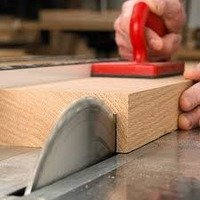Attic Ventilation
/
July 2012
by Bryce Given
 When it comes to ventilating your home's attic, the right amount of air flow and air volume can make a significant difference to the comfort and durability of your home. There are four primary reasons to ventilate, two of which relate to the comfort of your home and all of which can affect its durability. The four reasons for ventilating are:
When it comes to ventilating your home's attic, the right amount of air flow and air volume can make a significant difference to the comfort and durability of your home. There are four primary reasons to ventilate, two of which relate to the comfort of your home and all of which can affect its durability. The four reasons for ventilating are:
- Reduction of summer time heat in attics: Proper ventilation will improve flow of the sun-heated air and direct it out and away from the attic space, reducing heat that radiates into living areas. For flat roof designs, it is critical to cross ventilate through perimeter vents and unobstructed air movement channels within the roof's joist cavity. For steep sloped roofs, ventilation is typically achieved through eave and ridge vents with at least 50 percent of the ventilation capacity located high on the roof's ridge. Your local Building Department and current Building Code will provide specifics regarding Code compliant installations.
- Reduction of winter time moist air and condensation in attics: Attic moisture as vapor can condense to water droplets when coming into contact with a cooler surface, and then can drip onto attic insulation, gypsum board ceilings and wood framing causing them to stain or deteriorate. Proper attic ventilation can help to eliminate moisture and discharge stagnant attic air, reducing the potential for condensation.
- Ice Dams: An ice dam is a buildup of ice at the edge of a roof, which prevents melting snow water from freely draining off the roof. Roof temperature imbalances cause the dam to form as melting snow flows down the roof but freezes again at the point where the roof is below 32°F. The ice builds up over time as more water collects at the roof edge and freezes again. Then the water above that has not yet reached freezing backs up behind the ice dam. Cracks in the exterior roof covering allow this water to flow under the roofing and protective felt layers and into the attic, potentially causing damage to roof sheathing, framing, ceilings, insulation, and other areas of the structure. Natural roof ventilation along with increased ceiling/attic insulation can help maintain uniform roof temperatures in cold weather to minimize or prevent formation of ice dams.
- Prolonged service life of building materials: Wood sheathing, framing and roofing materials are moisture and heat sensitive. Materials can break down more readily through heating, cooling and moisture cycles. Proper attic ventilation can reduce the highs and lows of these cycles to create a more consistent environment, thus prolonging material durability.
Currently, the 2009 International Residential Code (IRC) is the generally accepted minimum standard for roof ventilation in most local jurisdictions. Incorrect air ventilation design, blocked vents and non-sealed ductwork are often observed as contributors to water problems in attics. Before undertaking ventilation and roofing projects, contact your local Building Department or qualified Design Professional to verify the requirements for the work you intend to accomplish.



